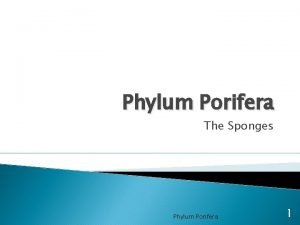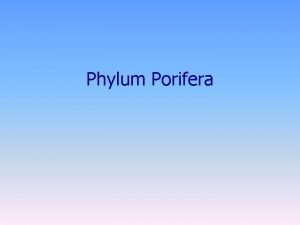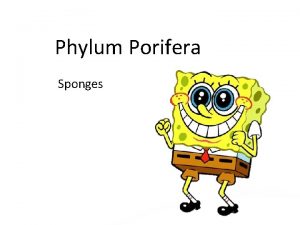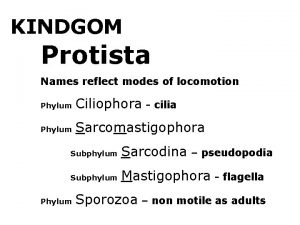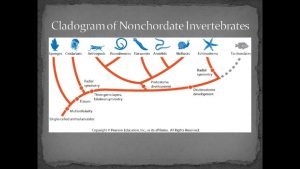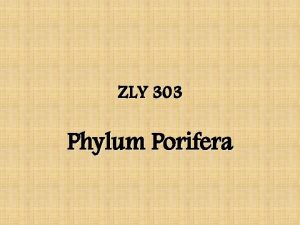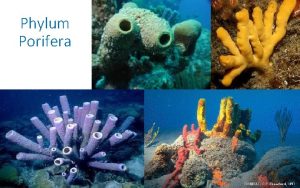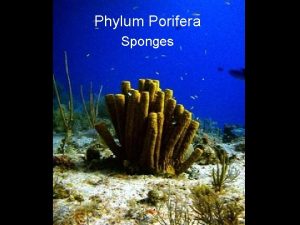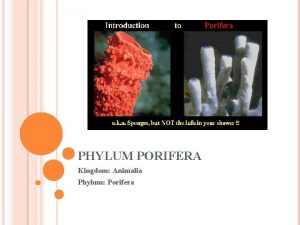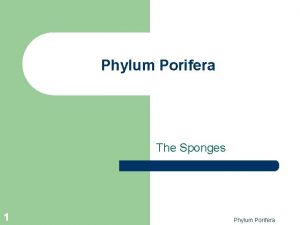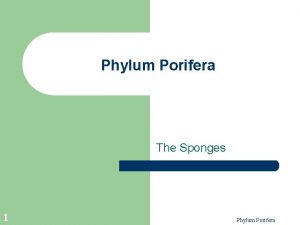II Phylum Porifera Sponges Sponges are the simplest






- Slides: 6

II. Phylum Porifera : Sponges *Sponges are the simplest, most ancient animals. Porifera means, “pore bearers”. A. Characteristics of Sponges 1. Contain pores (holes) to get food. 2. Adults are sessile (don’t move). 3. Are filter feeders – move water containing food in their pores & out a large hole in the top (an Osculum). 4. Body is asymmetrical & sac-like.

Characteristics of Sponges con’t. 5. Are multicellular. 6. Are heterotrophic, have no cell walls, & contain few specialized cells. 7. Have no mouth, gut, specialized tissues, or organs. 8. Have skeletons. 9. Reproduce sexually or asexually.

B. Structure of sponges -Sponges have a simple body form. -They depend on a current of water for everything, since they’re sessile. -Body forms a wall around a center cavity. Wall contains pores, to allow water flow into the center cavity.

Special cells & structures 1. Collar cells (Choanocytes) – digest food particles & contain flagella that move the water current through the sponge. 2. Osculum – large hole in the top of the sponge that allows water to exit the central cavity. 3. Spicule – thin, spiny structures that form the simple skeleton. 4. Amebocytes (Archaeocytes) – cells that build spicules, digest food, & transport particles to cells. 5. Spongin – fibers of protein that make up softer sponges.

C. Reproduction in Sponges 1. Sexual reproduction – eggs are stored inside the walls of female sponges. Male sponges release sperm into the water. -Sperm enter the female sponge through the water current & her cells carry the sperm to the eggs to be fertilized (internal fertilization). -Some are hermaphrodites.

Asexual Reproduction in sponges 2. Asexual reproduction – is either budding or regeneration. Gemmules – sphere shaped collections of amebocytes surrounded by a tough layer of spicules. -Can survive harsh conditions & later grow into new sponges.
